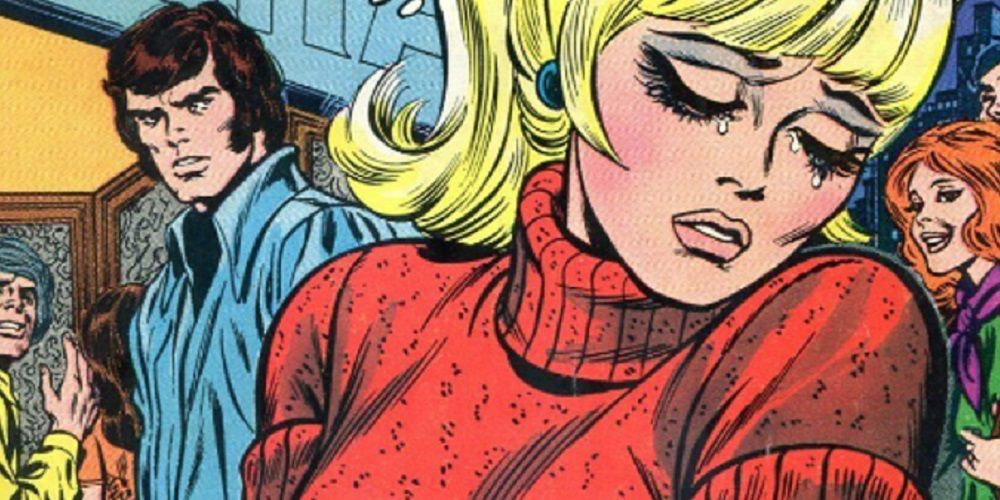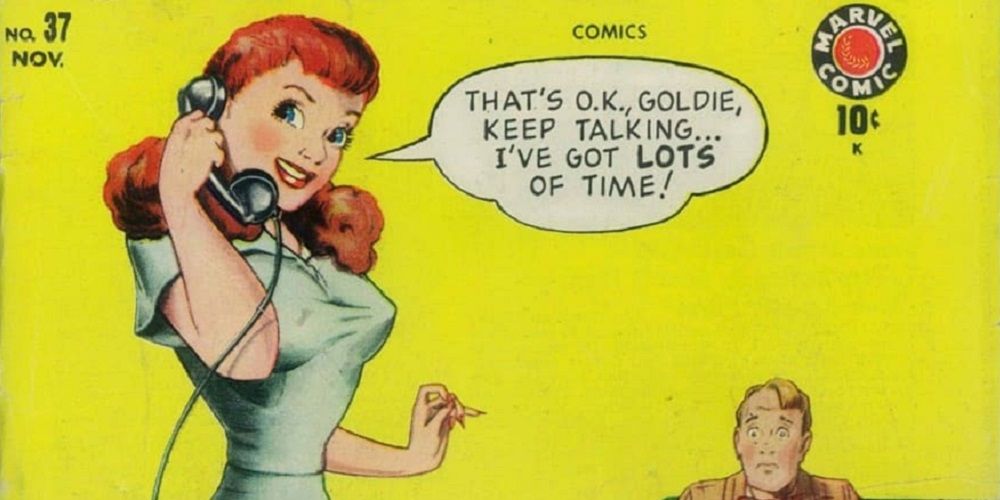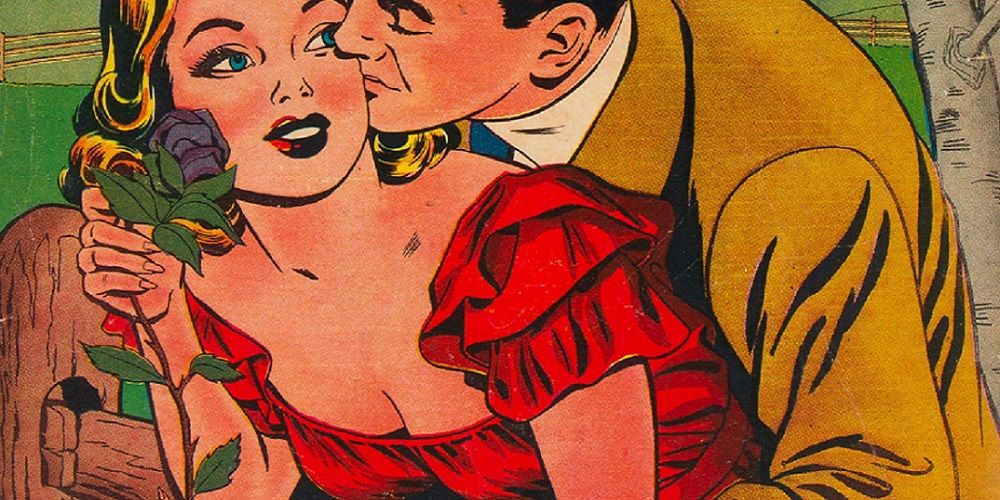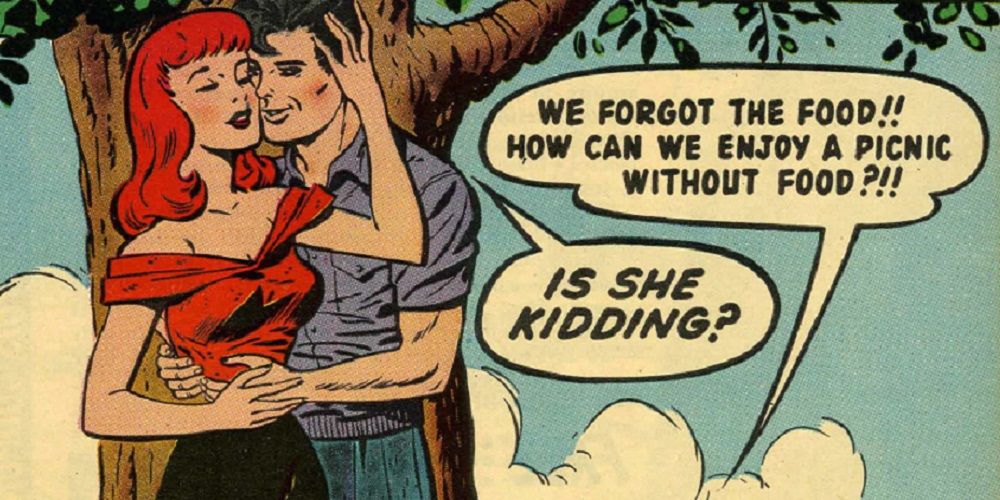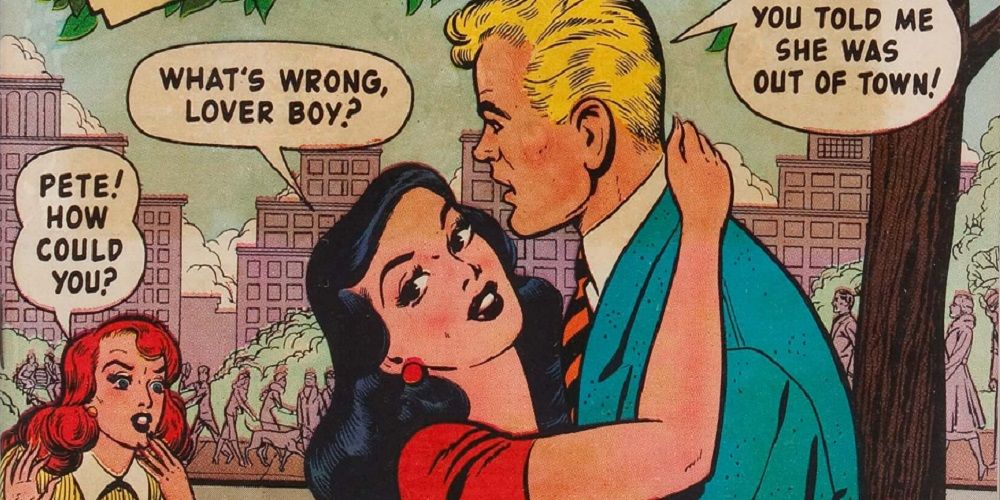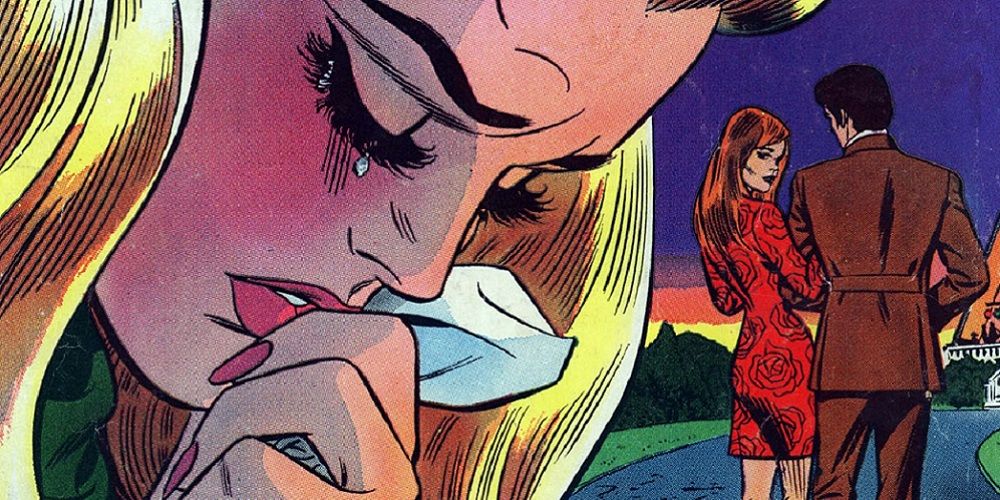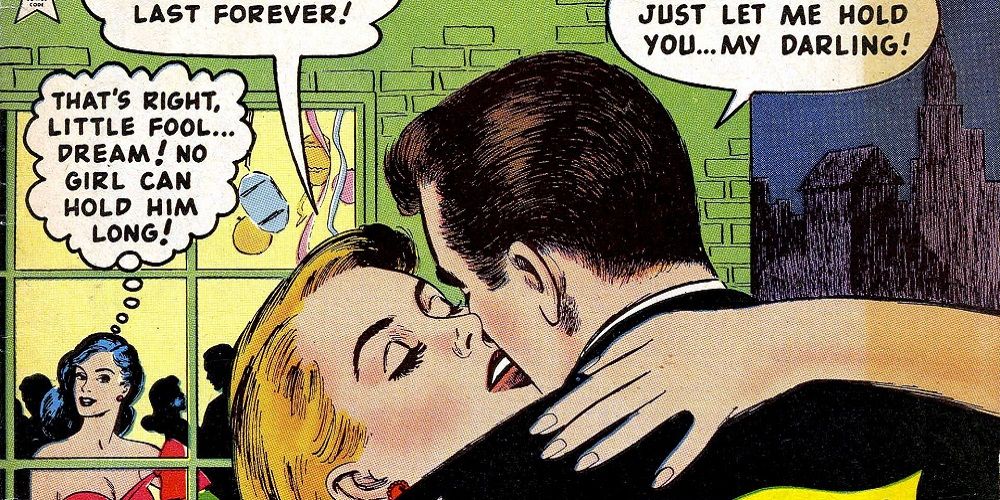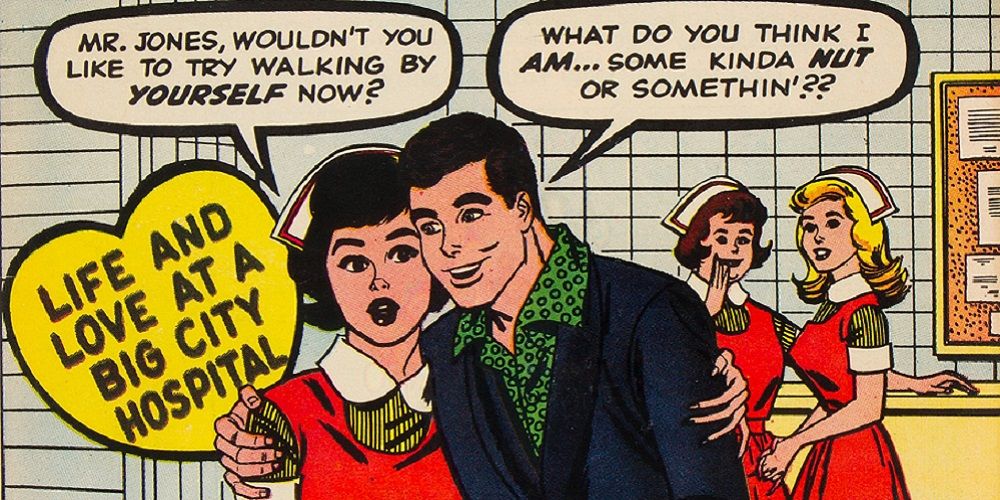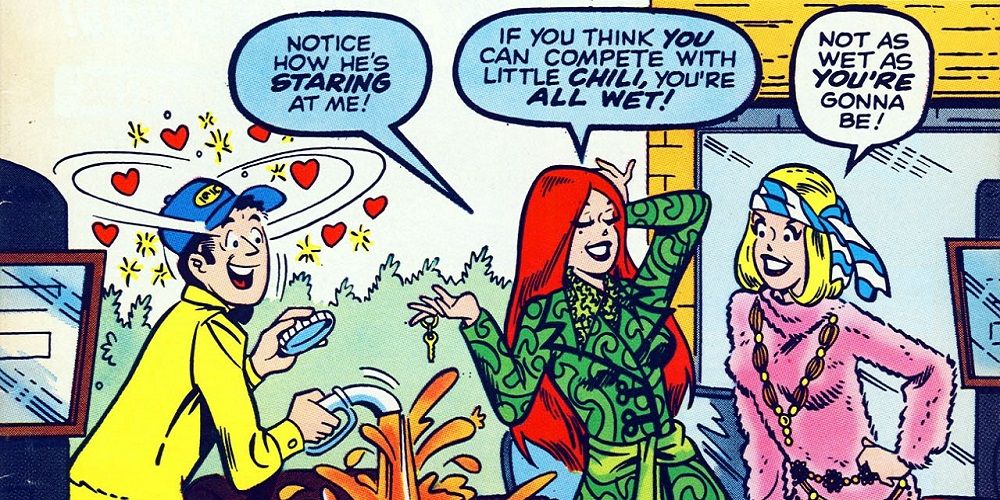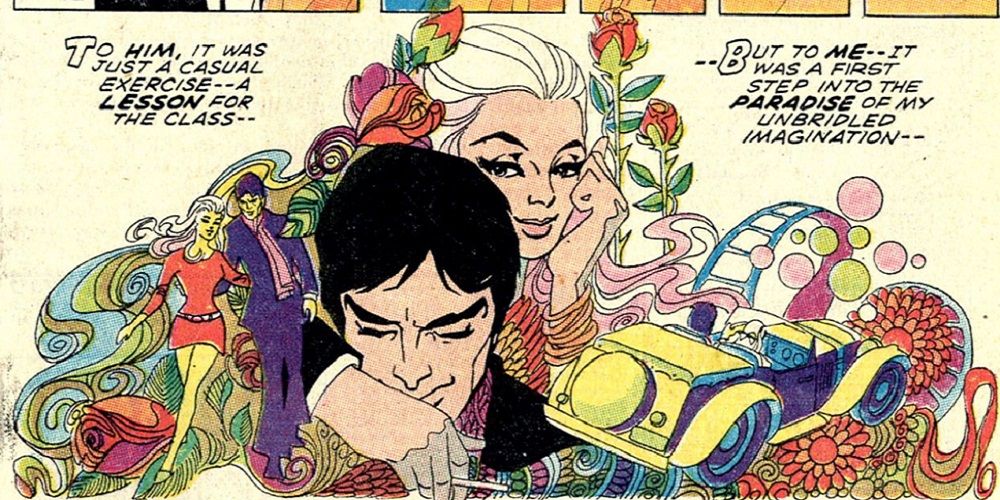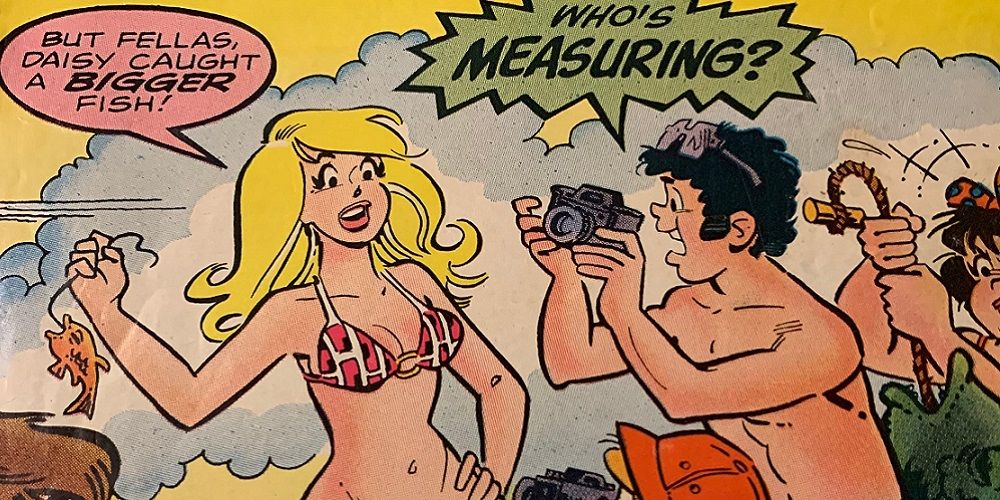Marvel's rise to prominence began in the early 1960s with the launch of such superhero titles as Fantastic Four, Avengers, and Amazing Spider-Man. During that era and through the '70s, Marvel continued to publish other types of stories, including horror and westerns. However, one genre modern readers have almost forgotten is romance comics.
Veteran readers know Jack Kirby is a genius of the superhero world, but some may not realize that Kirby co-created the first romance comic book, Young Romance, in 1947. Crestwood Publications saw enormous sales of that title as older readers moved away from the early costumed heroes, favoring romantic stories told with realistic settings. People seemed to need an escape after World War II's devastation, and romance comics offered an idealized glimpse into someone else's private life. Shortly after, Timely Comics (the Marvel forerunner) entered the market with My Romance. Before the onset of the Comics Code in 1954, dozens of love-themed comic book series were in circulation, enjoying sales into the millions. The Bronze Age of Comics saw interest in romance dwindle, but while the boom lasted, the House of Ideas produced some of the best-known romantic titles featuring the day's top talent.
10 Cindy Comics Had The Fun Antics of a Screwball Comedy
Cindy Smith was a Stan Lee creation who first appeared in Junior Miss #25. Modern Marvel fans might not know this, but Lee had a documented fondness for writing romantic stories during the genre's Golden Age heyday.
Cindy, a leggy redhead who resembled actress Claudette Colbert, began her own title with Cindy Comics #27, picking up the sequential numbering of funny animal book Krazy Komics. Like screwball comedy films of the era, Cindy's stories were comical and sassy with dashes of playful innuendo. For example, clueless boys stumbled after Cindy at every turn. Some early issues bolstered the humor with backup pieces written and drawn by the legendary Harvey Kurtzman, co-founder of Mad.
9 Stan Lee's Girl Comics Became Girl Confessions
Girl Comics was another brainchild of Stan Lee, who sought a female readership for Timely Comics. The first few issues followed the blueprint Jack Kirby and Joe Simon set forth with Young Romance, and stereotypical "girl meets boy" plot lines dominated the arcs. But Girl Comics soon ventured into detective and action stories featuring pencils by artists like John Buscema and Sub-Mariner creator Bill Everett.
Shortly after Timely morphed into Atlas Comics in 1951, Girl Comics became Girl Confessions, reflecting the influence of salacious confession magazines aimed at adults. The urge to escape the blandness of postwar America pushed readers to learn more intimate details about comic book heroines.
8 Patsy Walker Went From Lovelorn Teen To Defender
Patsy Walker and its companion title, Patsy and Hedy, each ran for more than 100 installments. Patsy Walker began as a teen comedy heroine in 1945, transitioned to mature romance as that trend flourished, and ultimately joined the superhero world as Hellcat of the Defenders. Patsy wasn't the only romantic character from the 1940s to appear in modern comics, but her transformation from a Golden Age teen to a super-powered crime fighter makes her unique.
Current Marvel continuity explains Patsy's early adventures as fictional – just lighthearted tales written by her mother. Meanwhile, Patsy Walker was co-created by a real-life female artist, Ruth Atkinson.
7 Love Romances Brought Authenticity To The Genre
Ideal began as a historical action title spotlighting tales about Joan of Arc and Cleopatra. But when the romance trend took hold, the book became Love Romances with issue #6. The first several love-themed installments featured photo covers, a typical way for editors to introduce stories with a note of realism. In fact, Love Romances claimed to print only real-life episodes, which was a tactic that
appealed to readers craving authenticity. This documentary-style approach allowed the title to prosper from 1949 to 1963, surviving the initial wave of romance books.
6 My Love Was A First-Person Anthology Spanning Two Eras
My Love demonstrated a pervasive trait of the romance trend: male writers who created romance comics almost exclusively. However, they were writing from the first-person perspectives of female characters. Sometimes, editors claimed the love-struck protagonists had dictated the details of their relationships. Thus, books of the day often began with the word "my" to reflect the narrative voice of their heroines. For example, My Experience, My Love Affair, and My Secret Life all graced newsstand shelves in the 1950s.
One thing that made My Love different from the pack was that, even though its initial run ended after only four issues, Marvel brought the title back in 1969. As the book survived into the '70s, it periodically reprinted older stories, a cost-saving measure that Marvel employed throughout the Bronze Age.
5 Actual Confessions Combined A Truthful Approach With The Promise Of Gossip
When Love Adventures morphed into Actual Confessions, the name change signaled a shift in approach. The renamed book embodied two components of the romance trend: supposedly true stories confided by jilted women mingled with the promise of sensational details. In contrast with cover taglines like "Tales of True Love!" and "The Men in My Past!" the result was often tame by modern standards.
Despite the brief run of the 1952 series, editors dedicated skilled talent to the book, including scripts by Stan Lee and pencils from veterans like Gil Kane and Carmine Infantino. In particular, the cover of Actual Confessions #13 showed a delicate concern for color and shading.
4 Linda Carter, Student Nurse Became The Modern Night Nurse
At the beginning of the Silver Age of superheroes, Marvel launched Linda Carter, Student Nurse in 1961. However, the title was a throwback to an earlier time, having the look of a late '40s romance comic. Cover artist Al Hartley had drawn dozens of covers for Marvel forerunners Timely and Atlas, so it was only natural that his work on Linda Carter had a vintage feel.
Linda Carter, Student Nurse only lasted nine issues. However, the protagonist continued her adventures in the pages of Night Nurse in the early '70s and has more recently provided medical care to superheroes like Daredevil and Doctor Strange. In the MCU, Rosario Dawson featured another incarnation of Night Nurse, Claire Temple, who appeared in several Netflix series like Jessica Jones and Luke Cage.
3 Chili Was A Funky Update To A Golden Age Redhead
Chili Storm appeared in several romance titles throughout the 1940s and 1950s. Readers primarily knew her from the pages of Millie the Model, where she provided both comic relief and dramatic tension as Millie's modeling competition. However, Chili didn't receive her own Marvel title until 1969.
Chili ran for 26 issues and served as a funky update to her Golden Age character, showing Marvel's desire to retain more liberated readers. Her design strongly resembled characters published by Archie Comics because penciler Stan Goldberg drew Archie titles for many years. The series highlight was issue #3 when Chili and Millie dropped by the Marvel offices to say hello to Goldberg and Stan Lee.
2 Our Love Story Showcased Top Of The Line Marvel Artists
Even in the early '70s, Marvel demonstrated its commitment to the romance genre. Artists like Sal Buscema, John Romita, and Gene Colan had made their mark on the top superhero titles of the day, and their pens and brushes likewise brought quality illustrations to Our Love Story beginning in October 1969. Stan Lee continued to spawn scripts for the early issues of the title. Readers gravitated to cover taglines like "You'll Share Every Kiss...Every Tear" and "As Real as a Lover's Embrace!"
Despite shifting to reprints by issue #15, Our Love Story is a collectible title due to its high-caliber art. Our Love Story #5 features art by Jim Steranko, and the Overstreet Comic Book Price Guide values near mint copies of that issue at $245.
1 Millie The Model Is The Reigning Queen Of Marvel Romance
Despite what her rivals might think, the true reigning queen of romance at Marvel is Millie the Model. Ruth Atkinson, co-creator of Patsy Walker, designed Millie for Timely Comics in 1945. For nearly 30 years, Millie's long-running search for romance crossed multiple genres. The popular title spawned several spin-offs, including Life with Millie and Modeling with Millie. Iconic Archie artist Dan DeCarlo had an influential ten-year run on Millie the Model, and the series also featured art from Al Hartley and Stan Goldberg.
When Millie ended in December 1973, her finale signaled the end of Marvel's romance boom. Millie and other beloved characters from the Golden Age occasionally make memorable appearances in Marvel's superhero titles. But the House of Ideas has never repeated its early success with tales of true love.

